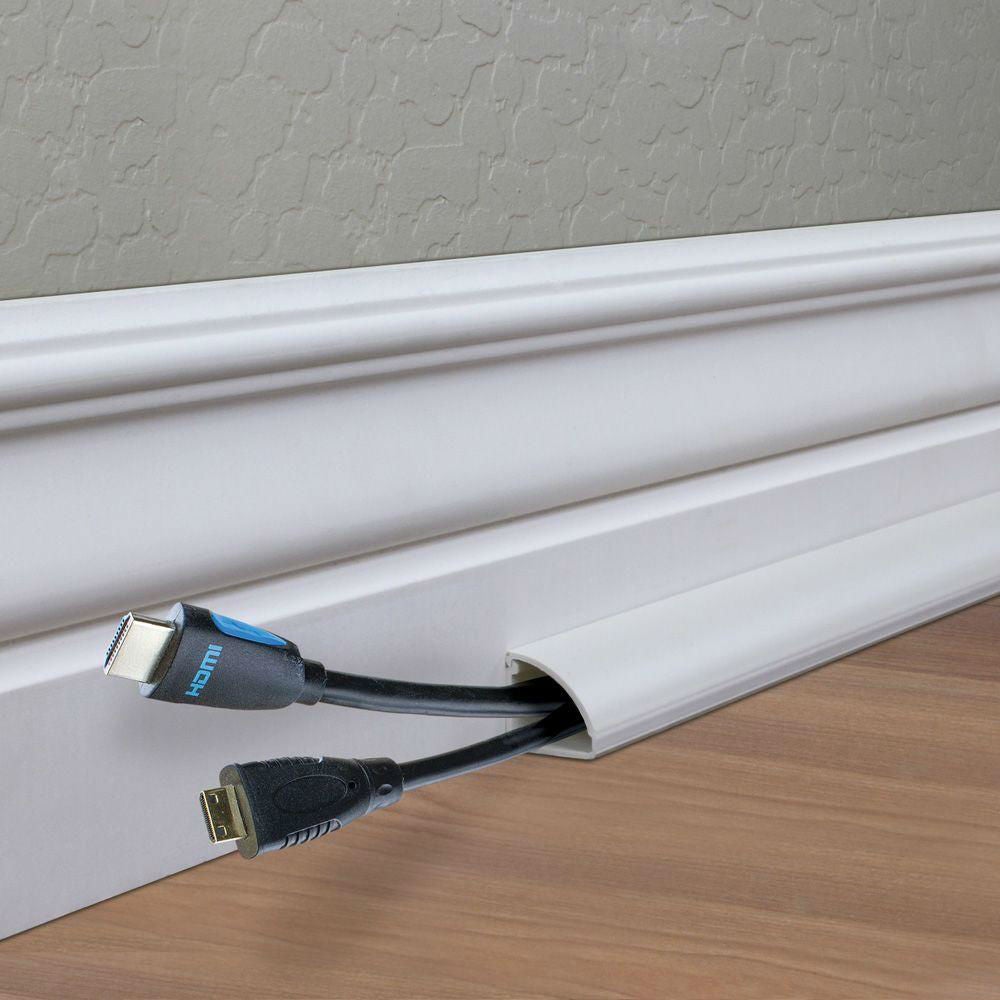

Invariably they mean either a freestanding rug (which works exactly as well as you imagine) or tucked between the carpet and the baseboard.
#Tv cable hider home depot how to#
If you spend any time on the Internet searching for how to hide home theater cables, someone will invariably suggest you hide them under your carpet. You’ll want to be very sure of your locations because, once the cables are in the wall, moving them can mean more time in the attic, drywall repair, and likely many words we can’t print here.īuy on Amazon #6) Hiding your Home Theater Cables Under the Carpet Wallplates can give you the clean look you are going for. Once you have determined where your gear will be housed, you’ll want to fish them up/down through the wall and to their specific locations. If you only have crawlspace access, installing Dolby Atmos speakers will be a problem. You’ll need to avoid exterior walls as either you can’t access them from above or likely hit a fire-break which limits speaker placement. #2) Use Fish Tapeīut what if you aren’t building your house/home theater from scratch (like most of us)? Well, you are going to need either attic or crawlspace access and some fish tape. That way if you run into a cable that has become obsolete (HMDI cables do this with nearly every new iteration of the standard) or one that breaks, you can easily replace it. If you wanted to futureproof your home theater, you would have every cable installed in conduit. It is also the least likely option to work for most of us.Ĭonduit is only possible to do with your wall completely open. This futureproofs your home theater so that you can always run new wires. The string is used to attach to new wires and pull them through if you need to add one.
#Tv cable hider home depot install#
You can install your wires in these tubes along with a string. Conduit is essentially tubes you run in your walls for your wires. #1) Install Wire ConduitĬonduit is your friend.

That can create a buzz that can be impossible to fix without pulling and rerunning the wire. Don’t want to hang a room treatment and put a nail through a speaker cable. You also need to plan out where everything else in your home theater will be installed. You need to know, definitively, where everything in your theater will be installed. All things being equal – this would be the solution we would all go with. The gold-standard of hiding home theater cabling is in-wall installation. Figure out which you are comfortable doing yourself, or willing to pay someone else to do, and plan accordingly. We can do better.Īuthor’s Note: If you aren’t building a house/home theater from scratch, you’ll likely need a combination of the following techniques.

Draping cables across the floor feels very “college.” We’re adults. When someone tells their significant other about their desire to create a home theater, they are usually met with two comments: “There aren’t going to be big, ugly speakers everywhere are they?” or “There aren’t going to be wires everywhere, right?” Hiding home theater cables is a concern even those that love home theater express.


 0 kommentar(er)
0 kommentar(er)
